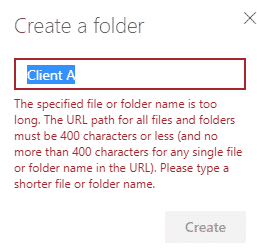Is SharePoint the replacement for network drives?
This is probably the first question you might ask when you migrate from file shares/network drives to SharePoint Online and Teams. Whether your organization is new to Microsoft 365 or has been using SharePoint and Teams for a while, you probably wonder if you should make the leap and migrate the entire network drives to SharePoint Online. In this article, I would like to answer this question.
Possible Use Case/Scenario
There are different reasons why you might be considering migrating to SharePoint Online and wondering whether SharePoint could be the proper replacement for network drives. Below are a few scenarios I encountered over the years while working with clients.
- You have files residing on local file servers, and access requires VPN, etc.
- Your local file server needs to be upgraded, and the cost of the upgrade exceeds the cost of SharePoint Online
- Your file server currently resides in your IT guy’s basement
- You are now using Dropbox, Box, or Google Drive
- Your organization started using Teams after the 2020 pandemic work from home lockdown, migrated some latest files to Teams/SharePoint, and you are wondering whether or not you should migrate it all and get rid of the file server in the basement
Can SharePoint replace the file server?
I will not do this like they do with soap operas where you need to watch 150 episodes to see how it ended. I will provide the answer right away. Yes, SharePoint can be a replacement for file servers. However, there are a few pre-conditions that need to happen for this to succeed. I provide a list of those below.
Proper Information Architecture is required
If you think you can just take the contents of the file server, migrate it all to a single SharePoint site/document library and then tell your boss that all is set and done, then you go and better hide in your parents’ basement from your boss and the users, next to your old file server. This is one of the biggest mistakes many IT organizations make – migrating to SharePoint without establishing the proper Information Architecture. In SharePoint, we do not think in terms of folders; we think in terms of sites. Moreover, SharePoint has limitations to be aware of. Ignoring those will get you in trouble pretty quickly and may make your boss want to hire me to fix the situation.

It is not just about files and folders
Another aspect you need to address is the fun little fact I always tell my clients about. While SharePoint can replace the file server, it should not be used as a File Server. Yes, navigating the 10-level folder hierarchy is fun, but users these days desire more than just basic document access. Users expect modern features like external sharing, conversations around documents (think Teams), the ability to create approval workflows, potentially more intelligent ways to organize documents (think metadata).
And on top of that, their needs may involve other apps not currently found on a file server but present in Microsoft 365 (Lists, Planner, Forms, etc.)
A single place for all of the content
This is especially true if your users are already using Teams. That means that some portions of your file shares are already in the cloud. Having a separate (local) file share does not make sense, as users will be prompted to search in various locations for content. When you have it all in one place, users can search it all from one location, all files and folders stick to the same compliance/security/retention policies.
Proper Training is mandatory
One thing you can’t ignore is the fact that when moving files from a file server to SharePoint Online, you also need to address the aspect of proper User Training. In SharePoint Online, it is the power to the users!!! Instead of users having access to a few drives/folders, the users are now in charge of sites and whole teams. That means they need to understand what happens when they invite an external member to the Team in Teams. Or how to manage version history or restore files from the Recycle Bin or restore the entire library. Many implementations fail not because “SharePoint sucks” but because users were left in the wild without proper training.
So, in conclusion…
Yes, SharePoint can be the replacement for the file server, as long as it is not set up and used as a file server



